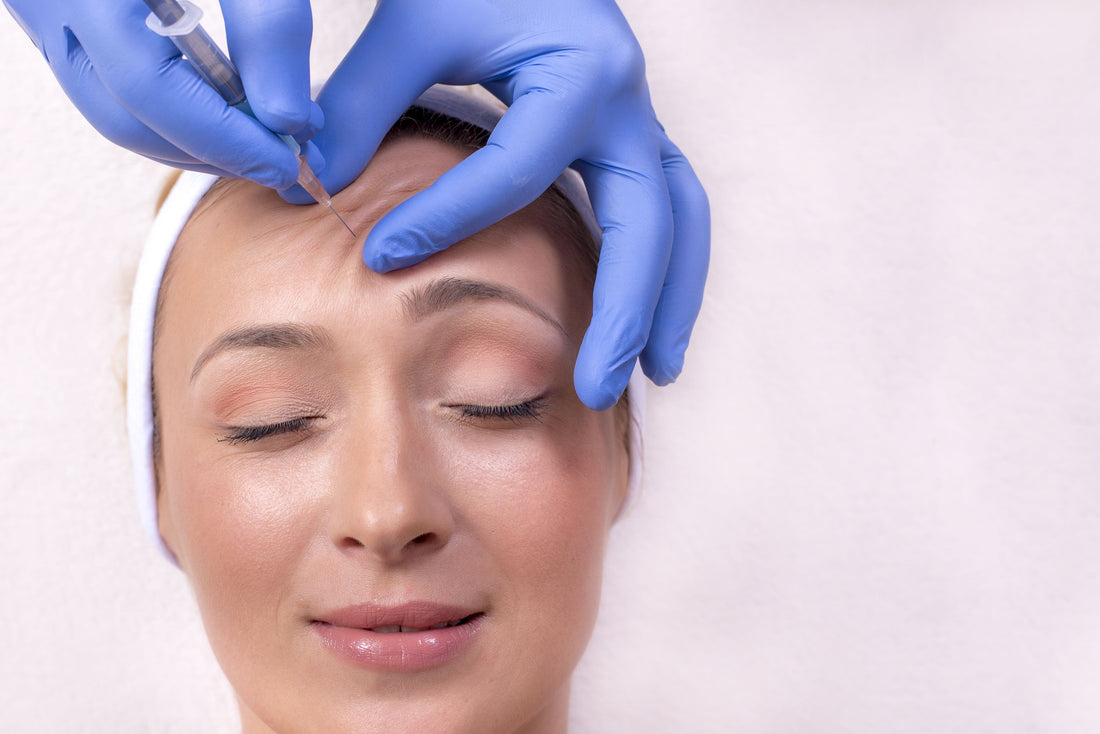
What Are the Most Common Dysport Side Effects to Expect?
Allen DoanShare
Introduction: Understanding Dysport Treatments
Dysport has become one of the most popular injectable treatments for reducing the appearance of fine lines and wrinkles. Known for its effectiveness in softening frown lines and achieving a youthful look, it works by temporarily relaxing targeted muscles.
Like any cosmetic treatment, Dysport comes with potential side effects. While many are mild and temporary, it’s important to know what to expect before undergoing treatment. Being informed not only prepares you for the recovery process but also helps you make safe, confident decisions about your aesthetic goals.
Key Takeaways:
- Dysport is FDA-approved and widely used for wrinkle reduction.
- Most side effects are mild and temporary, such as swelling or redness.
- Rare but serious side effects require medical attention.
- Choosing an experienced provider significantly reduces risks.
What Is Dysport and How Does It Work?

Dysport is a botulinum toxin type A injectable, similar to Botox, designed to reduce moderate to severe wrinkles. Once injected, it blocks nerve signals that cause muscle contractions. This relaxation smooths out fine lines and prevents them from deepening.
While commonly used for frown lines between the eyebrows, Dysport is also approved for medical conditions such as cervical dystonia (neck spasms). What makes it stand out is its ability to spread slightly more than Botox, making it effective for treating larger areas.
For patients considering wrinkle-relaxing injections, clinics like The Real Skin provide safe, professional treatments tailored to individual needs.
Why Understanding Side Effects Matters
Every cosmetic procedure has risks, and Dysport is no exception. Knowing the potential side effects helps set realistic expectations and ensures you can recognize what is normal versus what might need medical attention.
Being informed also reduces anxiety. Many people feel more confident going into treatment when they know what recovery looks like and what side effects are considered part of the normal healing process.
Common Mild Dysport Side Effects
Mild side effects are the most frequently experienced and usually subside within a few days. These include:
- Redness or swelling at the injection site
- Minor bruising due to needle entry
- Tenderness or slight discomfort, which typically improves quickly
These side effects are temporary and manageable. Simple remedies like cold compresses can help reduce swelling and bruising. Most patients can return to normal activities immediately after treatment.
Moderate Side Effects to Be Aware Of
Some patients may experience moderate reactions, which are also temporary but may last slightly longer:
- Headaches after injections, usually resolving within a few days
- Drooping eyelids (ptosis) if the toxin spreads to unintended areas
- Dry eyes or irritation, especially if treated around the forehead
- Mild muscle weakness near the injection site
These side effects highlight the importance of injection technique. Choosing a skilled provider minimizes the risk of Dysport spreading to unintended muscles.
Rare but Serious Side Effects
Although uncommon, serious side effects may occur if Dysport spreads beyond the treatment area. These include:
- Allergic reactions such as rash, itching, or shortness of breath
- Difficulty swallowing, breathing, or speaking
-
Severe muscle weakness
If any of these occur, it’s important to seek medical attention immediately. Clinics with a strong safety focus, such as The Real Skin, encourage patients to reach out right away if they experience anything unusual after treatment.
Factors That Influence Dysport Side Effects
Several factors can affect how your body reacts to Dysport, including:
- Injector’s experience – Skilled injectors know precise placement and dosage.
- Dosage used – Higher doses may increase the likelihood of side effects.
- Individual health conditions – Neurological issues or allergies may affect outcomes.
- Age and skin type – These influence how Dysport integrates into your facial structure.
Discussing your health history openly with your provider ensures the safest treatment plan.
How to Minimize Side Effects Before Treatment
Preparation plays a big role in reducing risks. Patients are often advised to:
- Avoid alcohol and blood-thinning medications (like aspirin or ibuprofen) before treatment.
- Stop taking certain supplements, such as fish oil or vitamin E, that can increase bruising.
- Share your full medical history, including allergies and current medications.
These steps help your provider create a safer treatment experience.
Post-Treatment Care to Reduce Risks
Proper aftercare is just as important as preparation. To minimize side effects after Dysport injections:
- Do not rub or massage the treated areas for at least 24 hours.
- Stay upright for a few hours after treatment.
- Use cold compresses to reduce swelling or bruising.
- Avoid strenuous exercise for the first day.
If you notice unusual symptoms or prolonged side effects, it’s best to contact us for guidance.
Who Should Avoid Dysport Treatments?
Not everyone is an ideal candidate for Dysport. It may not be suitable for:
- Pregnant or breastfeeding individuals
- People with certain neurological disorders
- Those with allergies to Dysport ingredients
A detailed consultation with a qualified provider ensures your treatment is safe and appropriate.
Comparing Dysport Side Effects with Botox
Dysport and Botox share a similar side effect profile since both use botulinum toxin type A. However, Dysport tends to spread slightly more, which may increase the risk of side effects like drooping if not administered precisely.
On the other hand, this diffusion can be an advantage when treating larger areas, as fewer injections may be needed. An experienced injector can help you decide whether Dysport or Botox is the better choice for your goals.
Myths and Misconceptions About Dysport Side Effects
There are common misconceptions that discourage people from trying Dysport:
- “It’s unsafe.” Dysport is FDA-approved and widely used in both cosmetic and medical settings.
- “Side effects are permanent.” In reality, side effects fade as the body naturally metabolizes the product.
- “It always looks unnatural.” Results depend heavily on the injector’s technique, not the product itself.
Debunking these myths helps patients make informed choices.
Frequently Asked Questions (FAQs)
How long do Dysport side effects last?
Most mild side effects resolve within a few days to a week.
Can Dysport side effects be reversed?
While Dysport cannot be dissolved like fillers, side effects fade naturally as the product wears off.
What should I do if I experience unusual symptoms?
Contact your provider immediately if symptoms persist or worsen.
Is Dysport safer than Botox?
Both are safe when administered by trained professionals; suitability depends on individual goals.
Conclusion: Making an Informed Choice
Dysport is a safe and effective way to reduce wrinkles, but understanding potential side effects is essential. Most reactions are mild and temporary, while serious complications are rare.
The key to safe and satisfying results lies in choosing an experienced provider who prioritizes your safety. If you’re considering Dysport, the expert team at The Real Skin can guide you through every step of the process, from consultation to aftercare, ensuring a positive treatment experience.
